Germany's scenic Routes

The German Alpine route reveals along its 450 km the beauty of the countryside with its rural farmers' villages, 21 picturesque lakes, 64 renowned spa towns, 25 awe-inspiring fortresses and castles as well as the unique richness of culture and nature at the edge of the Allgäu and Bavarian Alps. The soothing salt water pools are enjoyable and invigorating to your health. Palace Linderhof, the monastery Ettal with its famous liqueur, the countless lakes and the "Romantic Wedding in Bavaria", follows Mozart's trail with the possibility of a romantic wedding, will be an unforgettable experience for you.

In Bavaria alone, there are over 300 beer breweries. Along the 975 km of the beer- and castle road you can taste several kinds of beer and visit nearby breweries. Fairytale castles and romantic fortresses are impressive witnesses to the past. Medieval towns, monasteries, historic buildings and cultural treasures make sure that your journey becomes a special and diversified experience. In sparkling source of sagas and myths, hospitable people with regional specialties ensure that your trip through this region will be a pleasant one.
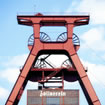
An extensive network of streets, railroad lines and inland waterways traverses the Ruhr Valley, in which workers' housings merge with industrial plants without any obvious boundaries. The Ruhr Valley is the largest industrial area in Germany and Europe. More than five million people live on 4,400 square kilometers. Originally, coal mining and other related industries, especially the iron and steel industry, had a significant effect on the region's economic development. "Steel barons", such as Krupp and Thyssen, established their industrial empires in the Ruhr Valley.
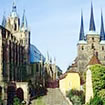
Travelling the Romanesque Route will reveal the diversity of the Romanesque period: monasteries, cathedrals, village churches and fortresses. With their sculptures and sacred ornaments, they are arranged like on a string of pearls. They tell the story of a European rebirth in what was once a neglected landscape. The Monastery of Our White Lady in Magdeburg built in 1017 is undoubted Germany's most important example of Romanesque architecture and the route's highlight.
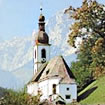
From the Baltic Sea all the way to the German Alps in the south, this 1736 km route enables you to see and experience the diversity of Germany's culture and landscapes. It's not just landscapes that change. There are vast cultural differences too. In southern Germany, the baroque architecture is dominant. Residences for princes and rulers, monasteries and churches are all examples of this splendid epoch. Tiny towns reached through gates in mighty walls. At high points, fortresses sit atop mountain peaks, contrasting with timbered gables and cobblestone lanes. And the isolated farms, villages and towns in the north paint a dreamy landscape.

The German Wine Route is the first and best known tourist wine-route in the world. This southwestern section of Germany, adjacent to France, enjoys 1800 hours of sunshine a year and has a Mediterranean flair. Here in Germany, figs, kiwis and lemons, ripen in the sun. Dreamily picturesque villages and delicious wines either dry or semi-sweet invite you to stay. There are countless wineries, pubs, bistros and gourmet restaurants where you'll enjoy the region's haute cuisine. You will discover the world's largest wine barrel. It can hold 1.7 million liters of wine - and serves as a restaurant seating 650 diners! The locals - friendly and loquacious - invite you to drop by!
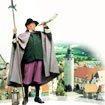
Welcome to the world of bold princes, good fairies, simple farm-boys, the "Little Red Riding Hoods" and all the other fairy-tale characters created here in Germany by the Brothers Grimm. Welcome to the 400-mile-long German Fairy-Tale Route from Hanau to Bremen. But it's also the unspoiled landscapes that surround these treasures. Don't miss the nature reserves and protected wilderness. Come enter the world of Fairy-Tales, Germany's legacy to the children of the world.

The Romantic Road is a 220-mile journey from the River Main to the Alps that offers the traveller what is simply one of the most beautiful and most engaging melange of scenery, cuisine and ambience Germany can offer. Wherever travelers find themselves on the Romantic Road, exceptional cuisine, delicious wines, glorious land- and city-scapes, castles, churches and fortresses inspire the appetite and the soul. Journeying here, the traveller inevitably experiences the charm, excitement and spirit of romance.
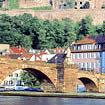
For several kilometers, the Porcelain Route goes along with the Glass Route. Among the attractions of the Porcelain Route are numerous and renowned bone china brands like "Hutschenreuther", "Villeroy & Boch" and "Rosenthal". Besides other fine china bone manufacturers and local museums you will find the German Porcelain Museum and the European Industry Museum for Porcelain. We will guide you to both factories and traditional craftsmen where you can experience how porcelain is made - now and then. There will also be the chance and enough time for you to shop in a china bone factory outlet of a world-class brand-maker!

The major area of glass manufacturing is found in the Bavarian Forest at the Zwieseler Winkel. The Zwieseler glass is famous for a variety of individual glass workshops, studios, galleries and exhibitions where one can admire both modern and historic glasswork. In this "glass heart of the Bavarian Forest", glass is still blown the old-fashioned way: by mouth. Bodenmais is the centre of glass tourism, where you can watch glass makers, glass lamp blowers, painters, cutters and engravers as they create several different glass objects. International glass exhibitions take place annually in June during the "Bavarian-Bohemian Culture Days".

The towns of classic culture are surrounded by gentle valleys and mountain ridges. In cities like Erfurt, Weimar, Jena or Gotha, you will find historic places of the German literary classics like Goethe or Schiller. Musicians like Wagner or Strauss, all embedded in the "green heart of Germany". The European Court Congress assembled in the city of Erfurt where also the historic meeting between Goethe and Napoleon took place. Musicians such as Johann Sebastian Bach, Franz Liszt, Richard Strauss, Richard Wagner and Johannes Brahms spent their time there and philosophers like Friedrich Wilhelm Nietzsche and Johann Gottfried Herder also settled here.
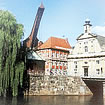
On the route from Lüneburg to Lübeck salt was transported to the Baltic Sea. A visit to the "German Salt Museum" gives you contact with salt production at first hand. Operations in the salt mines near Munich were once owned by the Augustinian monastery and began in 1517. Visitors are first given protective miner's clothing. After nearly a 1km journey, visitors leave a train and explore the rest of the mine, sliding down a miner's slide and riding on the salt lake in a ferry. The highlight of the tour is the "chapel," a grotto containing unusually shaped salt formations illuminated for an eerie effect. The 1 1/2-hour tour can be taken any time of the year, in any weather.

Timber-framed Houses
This regional route offers medieval fortress- and palace-architecture as well as half-timbered ornamentation in charming landscapes. Over 2000 kms, the route offers a successful combination of culture, history, leisure and relaxation. Let Germany's half-timbered art between the river Elbe and Danube inspire you and enjoy the specialties which differ from region to region. Here, historic places await you, such as Königslutter on the river Elm with its Romanesque imperial cathedral or the Hanseatic town of Quedlinburg with its unique medieval city center and the imperial city of Goslar with approximately 1000 half-timbered houses.
| >> home |